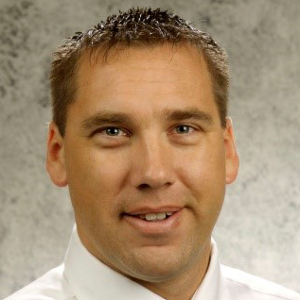
Date: March 20, 2018 | Time: 9:00am - 4:30pm
2018 Detroit Air Barrier Symposium
Join the Building Enclosure Council of Greater Detroit and the Air Barrier Association of America for a day of Air Barrier Learning.
RSVP HERE
*Lunch included with all ticket purchases*
Up to 6.5 hours of HSW (Health, Safety, Welfare) CEU Credits available
SCHEDULE
8:00am – 9:00am Registration and Vendor Tables
9:00am – 10:15am The Proper Way to Specify an Air Barrier | Laverne Dalgleish, 1.25 HSW CEU Credits
10:15am – 10:45am Break, Vendor Tables | 0.5 HSW CEU Credit
10:45am – 12:00pm Construction Cautions with Building Enclosures | Brian Stroik, 1.0 HSW CEU Credit
12:00pm – 12:45pm Lunch
12:45pm – 2:00pm “By Others”: The Elusive Subcontractor Responsible for Transitions | Andrew Dunlap, 1.25 HSW CEU Credits
2:00pm – 2:45pm ABAA Quality Assurance Program + Field Quality Control | Todd Parrott, 0.75 HSW CEU Credit
2:45pm – 3:15pm Break, Vendor Tables | 0.5 HSW CEU Credit
3:15pm – 4:15pm Through-Wall Flashings Compatibility Sustainability & Performance | Craig Wetmore, 1.0 HSW CEU Credit
PROGRAM DESCRIPTIONS + LEARNING OBJECTIVES
The Proper Way to Specify an Air Barrier – 1.25 CEU/HSW Credit
Course Description
This program provides an in depth look at the testing and codes relating to Air Barrier Systems. The presenter will discuss performance testing, new code requirements and proper specification of an Air Barrier System. Participants will understand what an Air Barrier Association of America evaluated air barrier assembly must go through to become an ABAA Evaluated System.
Learning Objectives
• Understand the benefits of the air barrier systems to the environment, building owner, and occupants.
• Discuss performance test standards relating to air barrier systems, including the NFPA 285 fire test.
• Examine the IECC 2012 & 2015 and ASHRAE 90.1-2010 and their impact on air barrier systems.
• How to properly develop a performance specification for an air barrier system.
Construction Cautions with Building Enclosures – 1.25 CEU/HSW Credit
Course Description
Building Enclosures and air barriers require care and attention to detail from the design to execution stage. With the myriad of wall configurations and choices in air barriers, insulation, and exterior cladding, not to mention the different manufacturers of these products, it can become daunting of where to start or how to ensure a high-performance enclosure. A number of key items need to be addressed both during design and the management of the construction process. These items need to be dealt with in a logical manner in a specific critical path. This presentation will review the Top 10 construction cautions with the building enclosure specific to design, pre-construction, mock-up’s, field installation issues and sub-trade execution and final testing for compliance.
Learning Objectives
• Acquire knowledge in critical aspects of design, based on building science principles, by using sample details for continuity, redundancy and certain code requirements of the air barrier system.
• Describe the process for pre-construction meetings and key criteria and agenda items to ensure performance expectations are met, sequencing is done properly, details are well understood and transition from one trade to another is accomplished using sample plans.
• Explain the various test methods for installation verification for both air and water performance by reviewing ASTM and AAMA test standards and how they conducted and when they should be conducted through examples and photos
• Plan successful mock up and testing program to verify continuity, compatibility and sequence of construction by review of sample mock-up’s and test methods that can be applied to both quantify performance and provide a learning tool for the construction team.
“By Others” The Elusive Subcontractor Responsible for Transitions – 1.25 CEU/HSW Credit
Course Description
This course will take you through a multitude of details with a review of assembly environmental separators that will show common enclosure assembly discontinuities and provide an education on common system transition methods.
Learning Objectives
• How transitions impact building enclosure performance.
• Why poor transitions can result in reduced energy efficiency.
• Learn how poor transitions can increase the risk of condensation.
• Discover how various compatibility and logistical issues can impact the options available to achieve proper transition details.
ABAA Quality Assurance Program & Field Quality Contro – 0.75 CEU/HSW Credit
Course Description
The QAP ties the manufacturer, the contractor and the installer together to ensure that the products are installed properly. It is based on ISO 9000 and ISO 12576‐2 standards. The presentation defines exactly what quality assurance is, how it is different than quality control, the impact of poor quality on a building system and a review of the key components of the quality assurance program for air barriers.
Learning Objectives
• Describe how quality management systems can be applied to the construction process and how quality assurance differentiates with quality control
• Assess potential impacts to cost, scheduling, building performance and durability by poor installation of air barriers through the use of case studies.
• Describe language required in a specification that provides key criteria in regards to implementing an air barrier site quality assurance program to reduce liability and risk.
• Define key components of an air barrier site quality assurance program and assess the importance of each component and how they interrelate.
• Through use of illustration and actual project site photo’s, identify acceptable and unacceptable installation of a variety of air barrier materials to determine if the assembly would meet manufacturer’s installation instructions and code requirements.
Through-Wall Flashing Compatibility Sustainability & Performance – 1.0 CEU/HSW Credit
Course Description
Understanding the performance characteristics, the recycled/recyclable content, ability to survive installation, and life cycle costs of the different through-wall flashing materials.
Learning Objectives
• Composition of each type of flashing and their effects on sustainability and life cycle costs
• Have a better understanding of how to specify through-wall flashings and avoid compatibility issues.
• Understand the performance characteristics different types of commonly used cavity wall materials and how to create a resilient flashing system.
• Recognize some of the challenges of installation
ABOUT THE PRESENTERS

Laverne Dalgliesh
Principal – Building Professionals Inc
Mr. Laverne Dalgleish is the Executive Director of the Air Barrier Association of America (ABAA). As such, he works to champion energy conservation in buildings while educating the building owners and designers about the benefits of energy conservation such as durability, comfort, reduced maintenance, reduced HVAC equipment costs and the positive impact on the environment.
Mr. Dalgleish travels North America on a weekly basis to educate building owners and designers on the benefits of effective and working air barrier systems in buildings. This education mission includes working with standards development organizations, training and education groups, government policy departments, and quality assurance program developers for the construction industry. Mr. Dalgleish is the Secretariat of two ISO Committees, ISO TC61 SC10 Cellular Plastics and ISO TC163 SC3 Thermal Insulation Products. He is also Chair of the ULC Thermal Performance in the Building Environment Standards Committee.
Mr. Dalgleish was the key developer of the ABAA Quality Assurance Program for the installation of air barrier systems in buildings. This program is based on ISO9000 and ISO 12576-2 but brings the ISO requirements together with practical applications for the air barrier industry.

Andrew Dunlap
Director of the Air Barrier Association of America,
Co-Chairman of the ABAA Research Committee,
SmithGroupJJR
Andrew Dunlap’s primary work experience is in the analysis and development of exterior building enclosures, including historic buildings. Exterior enclosure expertise is comprised of roofing, skylights, windows, curtain walls, rainscreen/cavity walls and waterproofing, and includes development of remediation options and construction documents for corrective work. Andrew’s work focuses on providing energy efficient designs as he regularly participates in validating designs for energy code compliance or to exceed code requirements. Project responsibilities include the collection of detailed building information, investigation and analysis of existing conditions, computerized thermal analysis of building systems (WUFI 5.2, THERM 7, WINDOW 7, and other software packages), formulation of remediation plans, preparation of construction documents for remediation, and construction contract administration including field observation and systems testing. This work often includes performing diagnostic field water tests as part of the forensic investigations or used to validate installed conditions.

Brian Stroik
Vice Chair – Air Barrier Association of America,
Manager – Building Envelope Solutions Team at Tremco Sealants and Waterproofing,
Immediate Past National Chair – BEC Building Enclosure Council
Brian Stroik is a recognized industry leader in the construction of energy efficient, sustainable and durable buildings. Brian works with key industry organizations – including the Air Barrier Association of America, the National Building Enclosure Council, and the Building Enclosure Technology and Environmental Council (BETEC) – on research and education regarding building enclosures, energy efficiency, and retrofitting and upgrading existing building enclosures. Brian is a frequent speaker on the subjects of commissioning the building enclosure (BECx), quality in construction, and mock ups / first run studies. Brian has also chaired numerous speaker sessions at national conferences and hosted roundtable discussions.
White papers by Stroik on the subjects of building energy efficiency and building enclosure design, among others, have been published in The Journal of Energy Efficiency & Reliability, The Journal of Building Enclosure Design and SprayFoam Magazine.

Craig Wetmore
Director of the Air Barrier Association of America,
Chair of the ABAA Voice Committee,
York Manufacturing
Craig Wetmore has over 20 years of experience in the building industry. Craig has been the President of York Manufacturing since 2009. He has a concentrated knowledge in through-wall flashings, moisture management and wall components. Craig is active in building community where he is a member of CSI, RCI, USGBC, ASTM and the ABAA. He serves as 1st Vice President for the Maine CSI Chapter, he is the chairperson of ABAA’s Voice Committee (education and outreach), is a member of ABAA’s Flashings and Terminations Committee, and serves as a Director on the Board of Directors of the ABAA.
Craig has given presentations to architectural firms, engineering firms, AIA chapters, Building Enclosure Councils, and CSI chapters. His presentation centers on through-wall flashings compatibility with air barriers and insulation products, lifecycle costs and installation advice on all different types of through-wall flashings. Craig and the York team have developed many new products to solve the issues that are encountered in the drainage of water from the building envelope.
